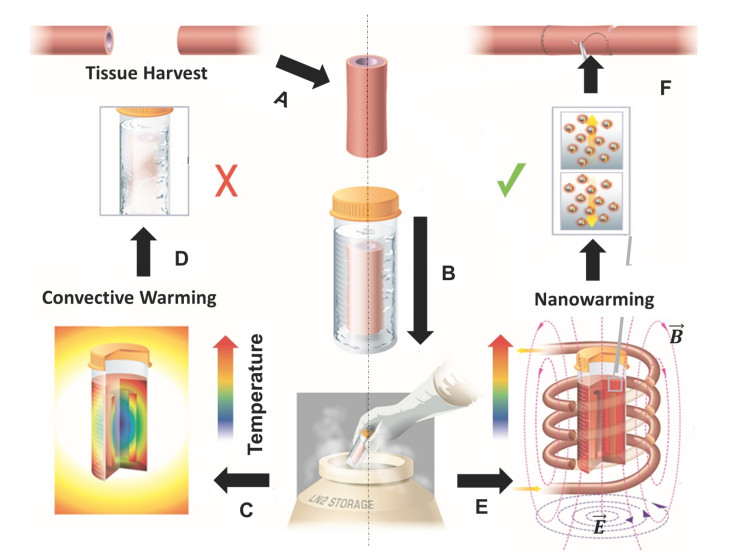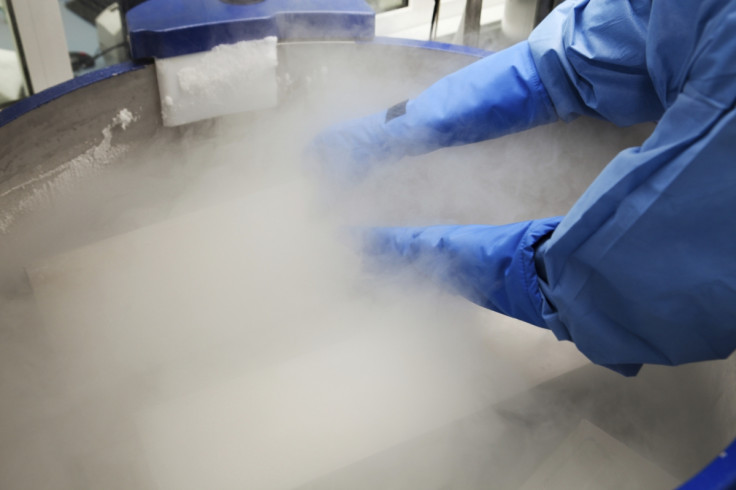Organ cryopreservation is becoming a reality – but bringing whole bodies back still 100 years away
Nanowarming aids the defrosting of frozen tissue safely, potentially transforming transplant waiting lists.
The cryopreservation of organs is a step closer to becoming a reality after scientists used nanotechnology to defrost frozen tissue without damaging it. Should they be able to scale up the process, this could transform waiting lists for lung and heart transplants – for which most organs have to be discarded because they only last a few hours after being removed from a donor's body.
Techniques relating to the long-term preservation of biological samples through freezing have taken huge strides forward in recent years. One of these is vitrification, which involves the super-cooling of tissues into a glass-like state. This has been identified as a method of the indefinite storage of tissues for transplantation.
However, the defrosting process has seen far fewer advances. This means that when tissues are brought out of a cryogenically frozen state, the tissue is often damaged. At present, the standard rewarming process leads to the cracking and crystallisation of samples larger than a few millimetres.
In a study published in Science Translational Medicine, a team led by Navid Manuchehrabadi from the University of Minnesota, has demonstrated a technique that could transform the cryopreservation of organs. The technique has been dubbed nanowarming.
To improve the defrosting process, scientists used iron oxide nanoparticles to create a solution. They then generated heat using an external magnetic field in order to warm the solution uniformly. The tissue was suspended in the "cryoprotectant" solution and, as heat was applied, the tissue was defrosted.
This technique was carried out on pig heart tissue, pig arteries and frozen human skin cells. Findings showed that (at scale being tested), none of the tissues showed signs of damage. After defrosting, the nanoparticles were washed away.

While the tests were on small tissue samples, the researchers believe nanowarming could be adapted to defrost full-scale organs. They said it could be applied to tissues and organs up to volumes of 1ltr and potentially beyond. "With continued breakthroughs in preconditioning and/or post-conditioning of organs, improved perfusion and vitrification protocols, and other enabling technologies that are being brought to bear to successfully vitrify human organs, we believe that nanowarming can converge with and enable these technologies to help make organ cryopreservation a reality," they wrote.
Should this come to fruition, it could transform organ transplantation. "The maximum tolerable organ preservation for transplantation by hypothermic storage is typically four hours for heart and lungs; eight to 12 hours for liver, intestine, and pancreas; and up to 36 hours for kidney transplants," the team said.
"In many cases, such limits actually prevent viable tissue or organs from reaching recipients. For instance, more than 60% of donor hearts and lungs are not used or transplanted partly because their maximum hypothermic preservation times have been exceeded. Further, if only half of these discarded organs were transplanted, then it has been estimated that wait lists for these organs could be extinguished within two to three years."
Scientists now plan to begin testing the technology on rat and rabbit organs, then scale it up to pig organs. Should they be successful, they could move onto human organs. John Bischof, senior author of the study, said: "These results are very exciting and could have a huge societal benefit if we could someday bank organs for transplant.
"We will have to actually go to a larger system if we want to move into human organs but there's nothing that precludes us from doing that. The technology does exist, the instrumentation, the coils etc., exist for us to scale up."

But what about whole bodies, cryogenically frozen in the hope of bringing them back to life in future? Bischof said: "I suppose, once you have done a whole organ, there is a certain intellectual connecting of the dots that takes you from the organ to the person. So I guess there is, if you can build a large enough radiofrequency coil and you can get all the nanoparticles in, I suppose I could see somebody making this argument."
However, he said that while the prospect is "attractive" they are, at present, only "cautiously optimistic" they will be able to safely defrost a kidney or heart. "There are some huge scientific hurdles ahead of us. And so I think it's rather premature to think about getting into a whole person."
Kelvin Brockbank, another study author, added: "The cryonicist movement will probably distort the importance of this to being able to preserve whole human bodies quite quickly. However, I believe that even if we could preserve the whole body, the chances that the neural pathways, which have been established during life, being maintained in after (during and after cryopreservation) are probably remote, at this point. And so I don't believe that we will be seeing success for whole bodies within the next 100 years."
© Copyright IBTimes 2025. All rights reserved.





















